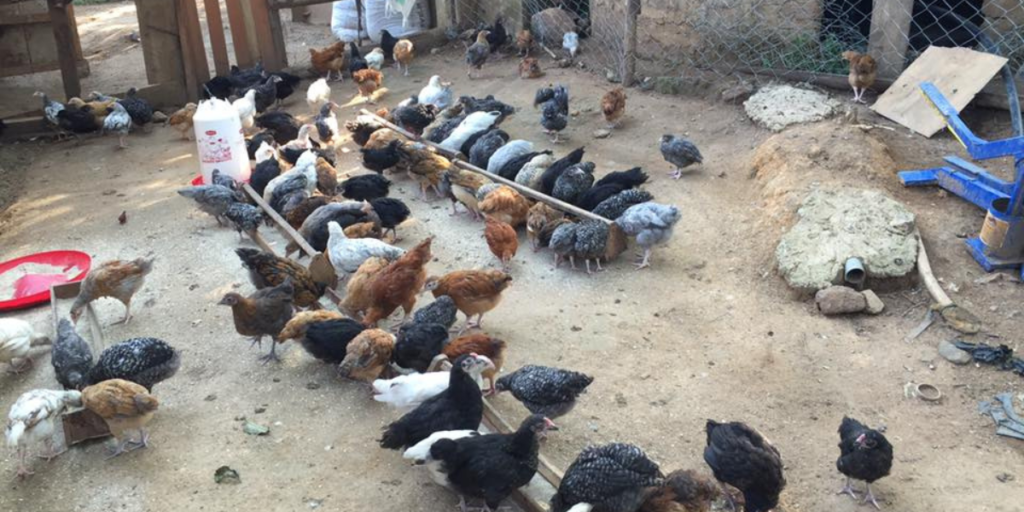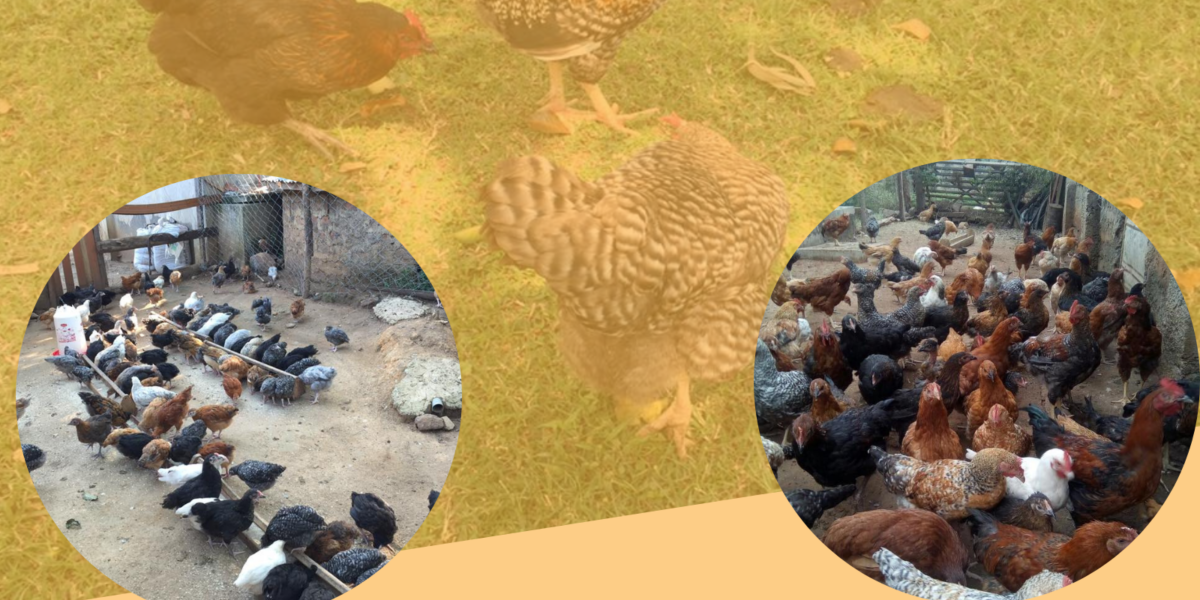The rearing of Improved kienyeji chickens has gained popularity in the recent past in Kenya among most smallholder farmers. Ever thought why? Well, first off, the word kienyeji refers to the local indigenous chicken breed – which as we all know is quite popular among Kenyan chicken lovers. The “Improved” version of it is further enhanced for optimal yields.
Interested in venturing into this line of business? It is simple, all you need to get started on a high note is INFORMATION i.e., things like market research, best farming practices etc. Below is a detailed guide to ensure the success of your venture.
Starting a Successful Improved Kienyeji Rearing Farm
Housing and Structure
You need to consider the following factors while constructing your poultry structure:
- Ventilation – Make sure your poultry house is open on both sides to allow free airflow in and out of the house, fit it with sleeves that can be rolled up and down with ease.
- The floor – Your floor should be easy to clean, preferably cemented. Cover it with wood shavings like sawdust to help absorb moisture and reduce pest and disease infestation.
- Temperature – You should ensure that the temperature is properly regulated by the use of jikos or electricity most especially in the brooder.
- Security – Choose a place safe enough from predators by ensuring there are proper walls and a mesh.
- Space – Each bird needs 2 by 1 feet space, therefore for 1000 birds you will need about 1000 by 500 feet space. Remember overcrowding can lead to cannibalism and stress.
The brooder should be constructed in such a way that sharp corners are avoided by the use of plywood to make them rounded, this helps reduce stampede during low temperatures where chicks tend to crowd at one point.
Capital Outlay for a 1000-Bird Farm
| Item | Quantity | Estimated cost |
| Feeds: Chick mash Growers Finisher/ layers | 3360kg@45, 6930 Kg @ 35 | 151200, 242550 |
| Vaccines and medication | 22000 | |
| Labour | 1 man @ 250×4 months | 20000 |
| Housing and structures | 150000 | |
| Chicks (a day old) | 1000@ 100 | 100000 |
| Equipment: Waterers Feeders Light | 50,000 | |
| Total | 735750 |
Breeds
Improved kienyeji chicken has several breeds adapted differently, among them include :
- Kuroiler – Fast growing
- Sasso – Mostly for meat, slow growth rate, egg production is about 200 per year.
- Kari Improved – About 270 eggs per year, very fast growth.
- Rainbow – Multi-colored, fast growth, very low egg production.
- Kenbro chicken – Fast growth, meant for meat.
You can hatch your eggs using incubators or procure your day-old chick from a certified institution like KALRO, Kenbro, or Ken Chick among others. The day-old chick is normally vaccinated against Marek’s.
Vaccination Schedule
| Disease | Age | Mode |
| Marek’s | 1 day | Injection |
| Newcastle | 1 week | Drinking water |
| 1st Gumboro dose | 2 weeks | Drinking water |
| 2nd Gumboro dose | 3 weeks | Drinking water |
| Newcastle | 4 weeks | Eye drops |
| Fowl typhoid | 6 weeks | Injection |
| Fowl pox | 8 weeks | Injection |
Common Diseases and Control
| Disease | Clinical signs | Control/Treatment |
| Coccidiosis | Characterized by weight loss, ruffled feathers, and bloody watery diarrhea. | Coccidiostats |
| New Castle | Dullness, sneezing, coughing, green diarrhea. | Vaccination |
| Fowl typhoid | Pale combs and wattles, watery yellow diarrhea, ruffled feathers and closed eyes. | Vaccination |
| Gumboro disease | Weight loss coupled with bloody diarrhea. | Vaccination |
| Fowl pox | Depression, poor growth and reduced egg production | Vaccination |
Feeding and Nutrition

Feeding your chicken is critical for your success from a day old to the time of sale. From day one to 8 weeks feed them with chick mash which is high in protein. At week 9-18 provide them with crude protein in the form of Growers mash that helps in the development and regulation of excess fats.
From week 19 onward depending on your target feed them on finisher if they are for meat to help in fattening and increased weight, on the other hand, feed them with layers mash with 18% crude protein for egg production.
Water is an important component, you should ensure that clean water is provided in the waterer at an interval of 50 chicks one waterer, is then cleaned up and refilled with fresh water after a day.
Provide vitamins to your chicken in the form of boosters mixed with feeds also provide perches which are mostly kale or spinach that help supplement vitamins and help keep the birds busy. Also, provide grit as sand to help in digestion.
Remember you can formulate your feed to reduce the expense of purchasing the feeds by combining the different components in the right ratio.
Marketing
Key drivers that will dictate your market are consumer preference, and demand for the end product either eggs or meat. You ought to have done proper market research by the time your birds are due.
Improved kienyeji chicken grows faster than conventional ones, understand proper management they are ready for market in 3 to 4 months if meant for meat or 5 months if meant for laying.
You can sell your chicken directly to hotels and restaurants, food processors, or directly to consumers. You can also do value addition to reap more depending on your capacity.
Potential Profit
Improved kienyeji chicken can be profitable all across the stages of growth from one day old through to over 5 months depending on your market. For instance, a day-old chick sells at Kes 100, a 3-week-old old Kes 280 and a kilo of mature kienyeji goes for Kes 500.
When you have 1000 heads of mature improved kienyeji chicken each roughly 2.4 Kg, you are likely to get Ksh1.2 million in five months. Remember the returns can be higher with value addition.
Conclusion
Are you ready to take the first key step into a more promising venture of improved kienyeji chicken rearing? Wait no further, start by securing a secure site and putting your capital right. By focusing on proper vaccination, feeding, market research and proper planning improved kienyeji can be an exciting and promising venture.
Generate a Business Plan (PDF) for your Kienyeji Chicken Business Idea Instantly
10-Page Plan for Just Ksh50/- per PDF.

With a BSc in Agricultural Biotechnology, Dennis is a results-oriented author who draws extensively from his farm management experience. When he’s not working on the farm or contributing to the Bizsasa platform, he enjoys watching soccer with friends.

Very Important information for a young farmer
Good enough for beginners like me. Would like to get more on chicken rearing.
Comments are closed.